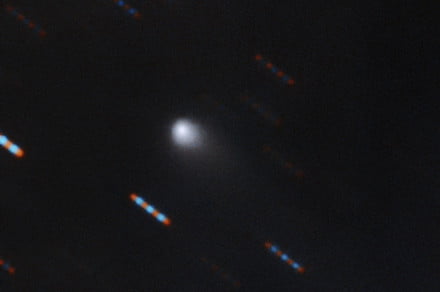As the interstellar comet known as 2I/Borisov passes through our solar system, astronomers are finding out more about the outside visitor. Scientists have just discovered that the comet contains cyanide.
Since the comet will be the closest interstellar object to pass us, scientists have been able to study it at relatively close range. They have found a thin cloud around the comet, which indicates cyanogen gas. Universe Today reports that the presence of cyanide does not pose a threat, since Earth will not come close to passing through the comet’s tail.
The International Astronomical Union (IAU) said that 2I/Borisov would come the closest to the sun on December 7. In December and January, the comet will be brightest in the southern region of the sky, before zooming out of our solar system and on to more distant pastures.
The presence of cyanide in 2I/Borisov leads scientists to believe that other solar systems in the universe could be made up of the same things as ours, since comets in our solar system, such as Haley’s Comet, also demostrate the presence of cyanogen gas.
“The discovery confirms predictions that planetary systems can eject large numbers of icy planetesimals into interstellar space, which can become active comets if they pass close enough to our sun. This matches what we believe happened in our solar system during the time of planet formation and migration,” Professor Alan Fitzsimmons of the Astrophysics Research Centre at Queen’s University Belfast, told Universe Today. “What’s surprising is how ‘normal’ Borisov looks at the moment. This could indicate similar comet formation regions in other solar systems.”
2I/Borisov is closer and will stick around for longer than the first interstellar object that was discovered, in 2017, named ‘Oumuamua. ’Oumuamua was already leaving our solar system when it was discovered — which means that Borisov could be a more promising discovery since it’s still headed our way.
According to astronomers, interstellar asteroids pass through our inner solar system about every year, though we don’t often catch them in action. New and advanced technologies are finally allowing us to discover these objects as they pass by.

